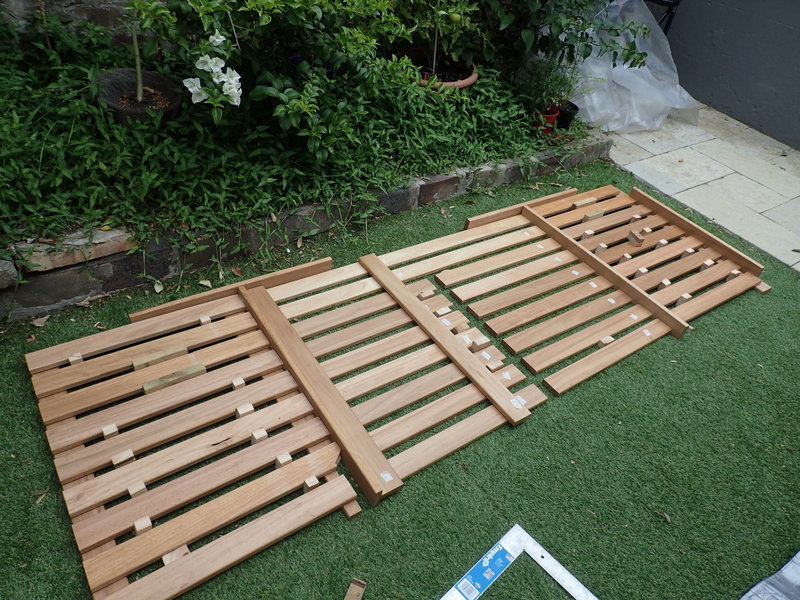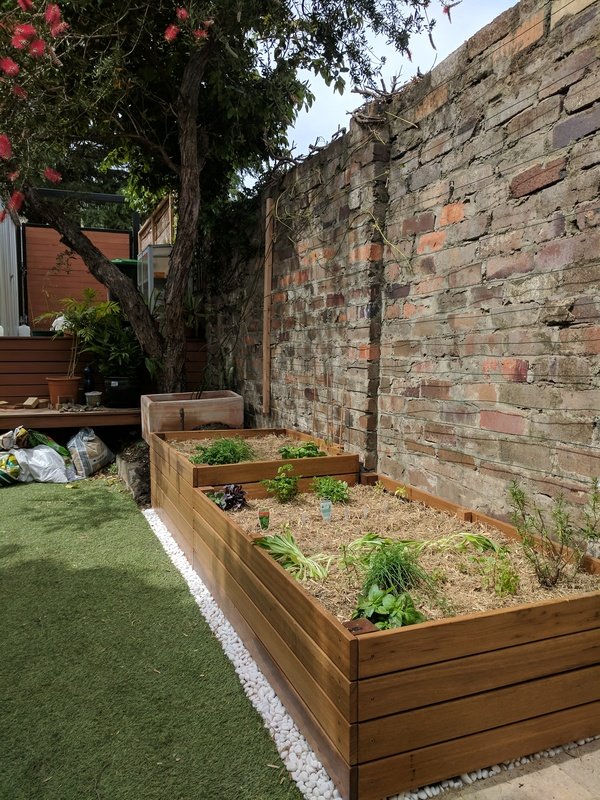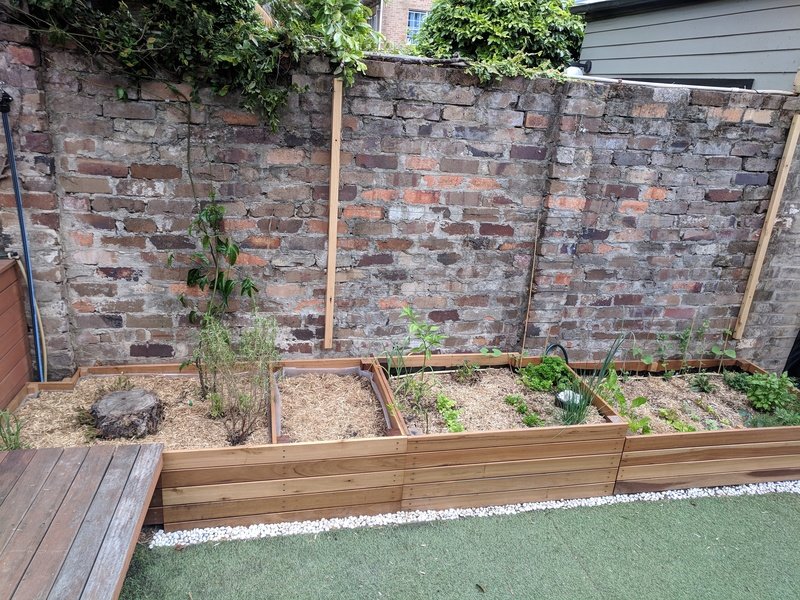When we moved into the house, the garden was partially new (fence, astroturf, elevated back) and partially still overgrown wilderness (bottlebrush, palm and bougainvillea competing with weeds).
For about a year we didn’t change much and grew tomatoes and herbs in pots spread out everywhere. But eventually we came up with a plan to transform the wilderness into a veggie patch.
That involved getting rid of the two bougainvillea, the ponytail palm and the bottlebrush tree. The first two we dug up and gave away via freecycle.org. But to remove the two trees, we required council approval. Since this seemed initially like a difficult and uncertain process, nothing happened for quite some time.
Eventually we picked up the plans again in September last year, got the approval from council and started by removing the ponytail palm which we also dug up and gave away.
That cleared up enough space to start with the first part of the veggie patch. And for about a year we happily planted in those two first beds while trying to find a replacement tree for the bottlebrush.
The council approval required us to plant another tree, if we remove the bottlebrush. So we did our research, bought 6 different trees and also nearly a chestnut tree and realised that none of them were suitable as replacement tree. Either because they were too small and would not reach the required height in the year we had to cut down the tree or because they were not grown in the right way.
So again nothing happened for quite some time till we eventually drove up to Wirreanda Nursery in June and settled on a Lemon Myrtle tree. The tree was due to be delivered in September which gave us just enough time for the tree removal (the permit was only valid till then).
And this afternoon we finally finished the rest of the garden bed. The lemon myrtle is growing happily behind the shed at the back of the property and the bottlebrush – which we couldn’t bring ourselves to have poisoned and killed – has also started sprouting again (something we hoped it would do).
Now all that’s need are a few more seedlings to grow strong enough to be planted in the new areas.














